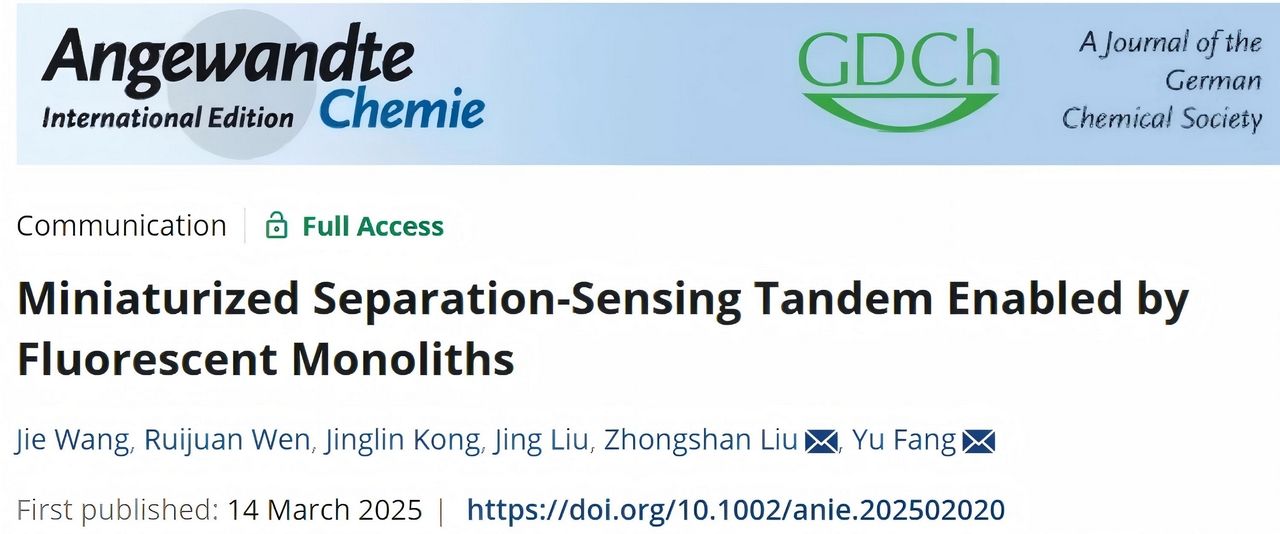
Jie Wang, Ruijuan Wen, Jinglin Kong, Jing Liu, Zhongshan Liu, and Yu Fang. Angew. Chem. Int. Ed. 2025, e202502020. DOI: 10.1002/anie.202502020

Fluorescent sensor with high sensitivity has been adapted into portable devices for environment analysis, meat freshness assessment, illicit drug, warfare agent and explosive detections. However, it often encounters performance degradation due to interferents in real scenarios. With increasing requirements for mixture sensing, two strategies, exemplified by the principal component analysis (PCA) and sensing array, have been developed for rapid qualitative analysis. Both methods are highly dependent on the raw data, which are susceptible to sample diversity and environmental factors (e.g., humidity, interferent). Indeed, the sensing array and PCA methods are difficult for quantitative analysis. To date, discriminative sensing for mixture by either fluorescent sensor or other sensors remains a challenge. This issue is attributed to the absence of a separation unit prior to the sensor. we assume that incorporating the separation unit with sensors may provide a new platform for mixture sensing (Figure 1).
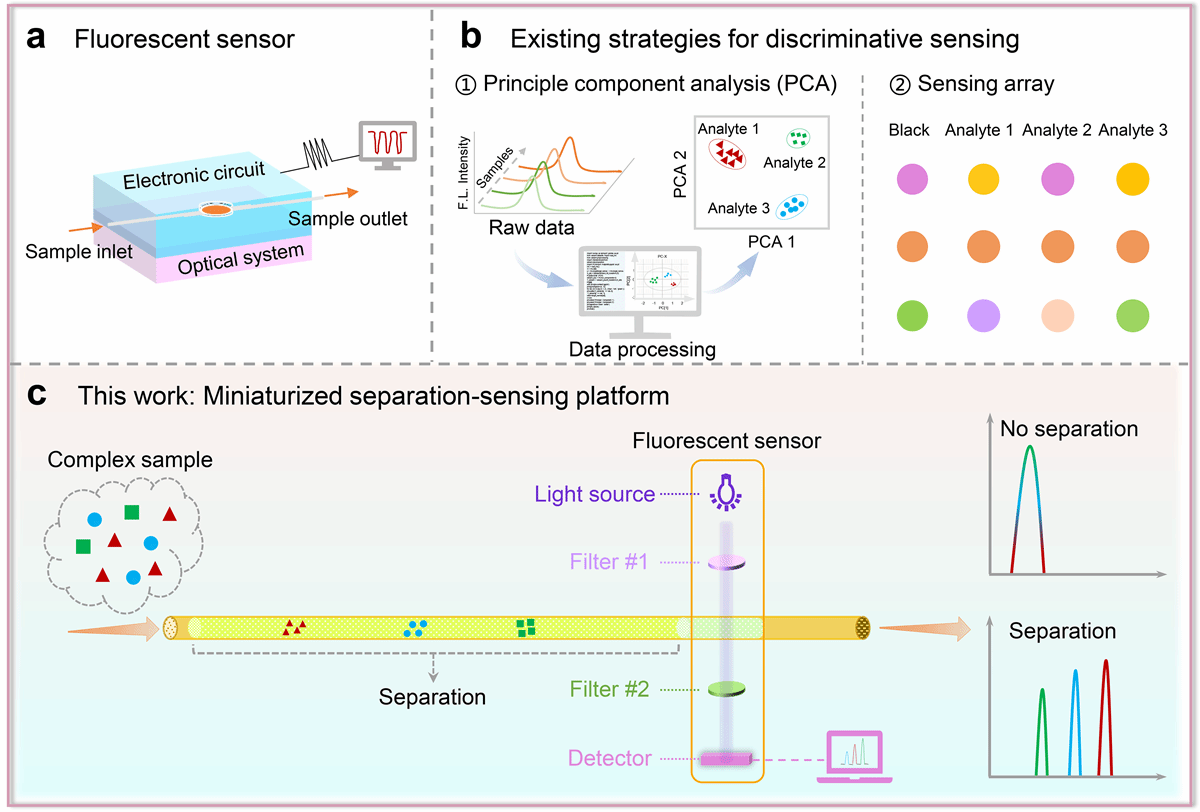
Figure 1. a) Illustration for fluorescent sensor. b) Existing strategies used for discriminative sensing. c) Miniaturized separation-sensing platform.
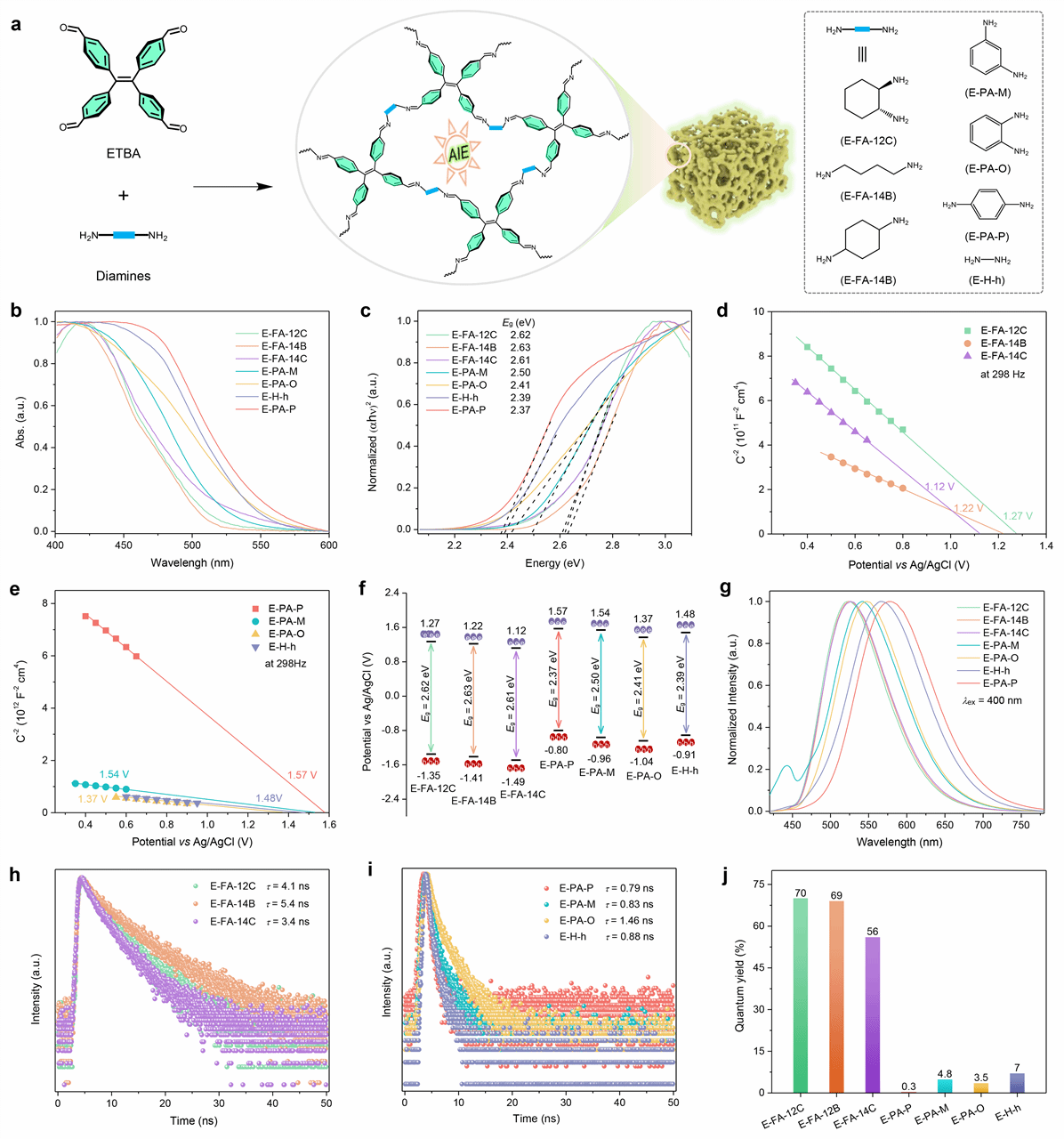
Figure 2. Synthesis and photophysical property of fluorescent monoliths. a) Chemical structures. b) Diffuse reflectance UV-vis absorption spectra. c) Tauc plots. d and e) Mott-Schottky plots at 298 Hz. f) Distribution of valence band and conduction band. g) Fluorescence emission spectra. h and i) Fluorescence lifetime analysis. j) Quantum yield.
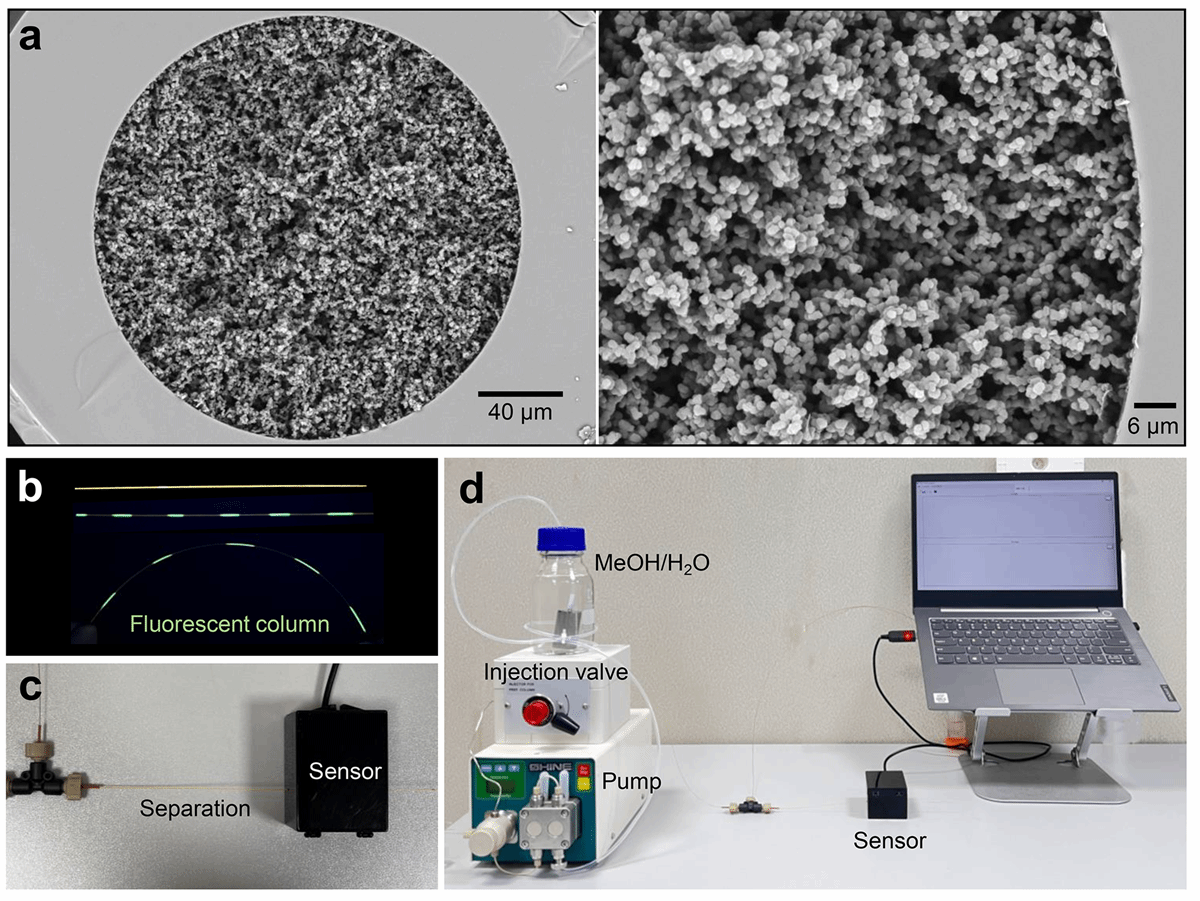
Figure 3. a) SEM images of E-FA-12C fluorescent column. b) Photos of column under day light and UV light. c) Column with separation and sensing capacities. d) Home-made separation-sensing platform.
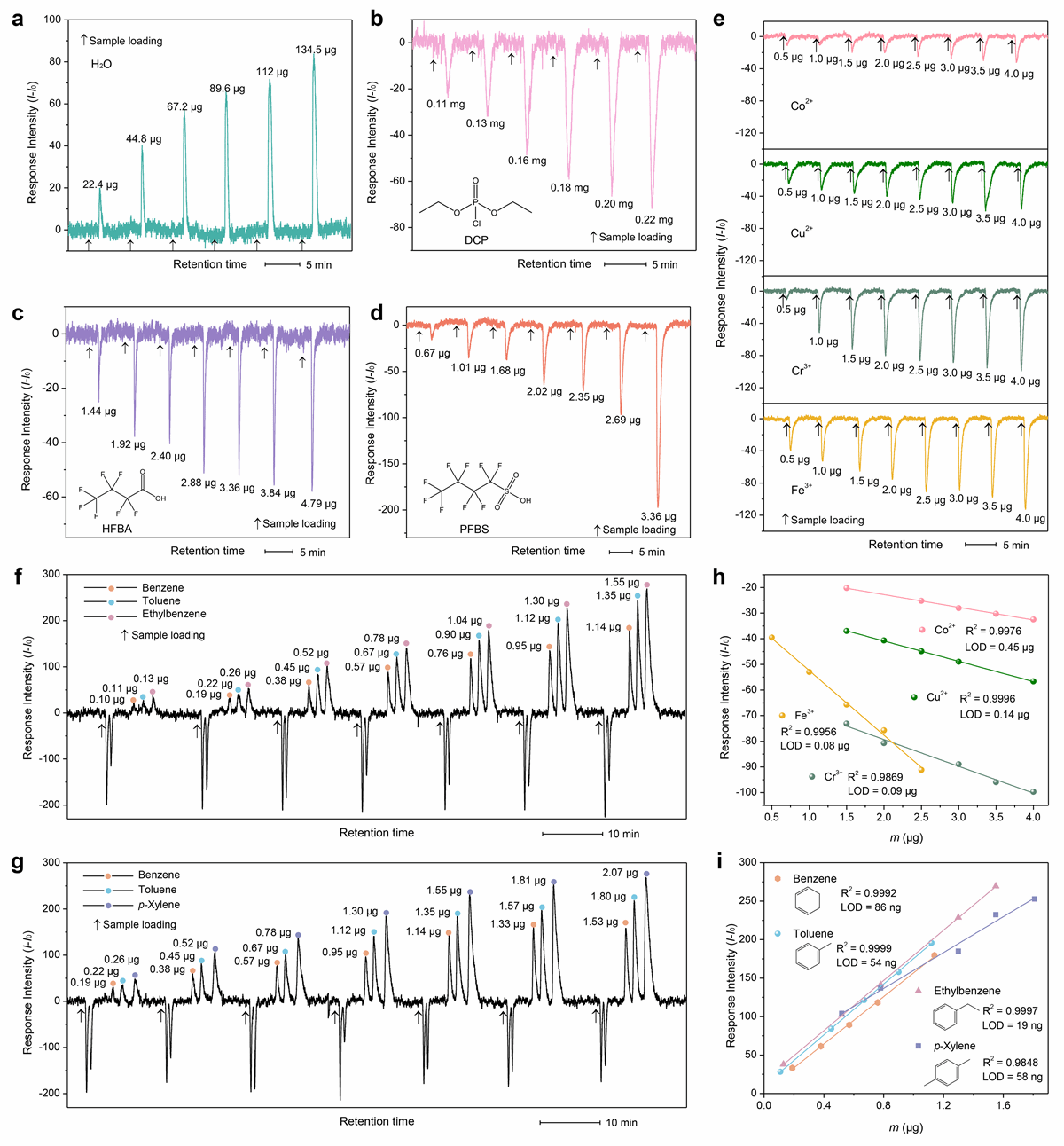
Figure 4. Validation and application of separation-sensing platform. a) Trace water in methanol. b) DCP. c) HFBA. d) PFBS. e) metal ions. f) BTE mixture. g) BTX mixture. h and i) Relationship of response intensity versus analyte mass loaded. a-e) obtained with E-H-h fluorescent column. f and g) obtained with E-FA-12C fluorescent column.
Here, we utilize dynamic covalent chemistry to produce a new sensing medium, named porous fluorescent monolith (Figure 2), which can separate mixture and meanwhile be integrated into a sensor for discriminative detection. Fluorescent monoliths are prepared by using 4,4′,4″,4‴-(ethene-1,1,2,2-tetrayl)tetrabenzaldehyde (ETBA) and diamines as monomers. Their porosity and photophysical property can be modulated by the diamine linkers including fatty amines, aromatic amines and hydrazine hydrate. Considering that the separation and sensing will benefit from good mass transfer, we constructed a through-porous structure in fluorescent monoliths by adjusting binary solvent ratios. To achieve a separation-sensing tandem platform, we prepared fluorescent monoliths in capillary column through in situ polymerization of monomers (Figure 3a).
Taking advantage of separation and sensing capacities of the fluorescent monolith, we set up a miniature separation-sensing platform (Figure 3d) with negligible dead volume, and realize quantitative analysis for trace water in methanol, a sarin simulant, perfluoroalkyl compounds and metal ions. The separation-sensing platform furthermore demonstrates baseline separation for benzene, toluene, ethylbenzene and xylene, with limit of detections of 86, 54, 19 and 58 ng, respectively (Figure 4) .
To our knowledge, this is the first time that a fluorescent monolith is used to realize a separation-sensing tandem. We anticipate our findings will provide a promising strategy for producing portable devices with the on-site discriminative sensing ability for real samples.
First Author: Wang jie, doctoral candidate, Shaanxi Normal University
Correspondence Authors: Prof. Fang Yu, Prof. Liu Zhongshan, Shaanxi Normal University
Full Text Link: https://doi.org/10.1002/anie.202502020
 Latest Updates
Latest Updates






